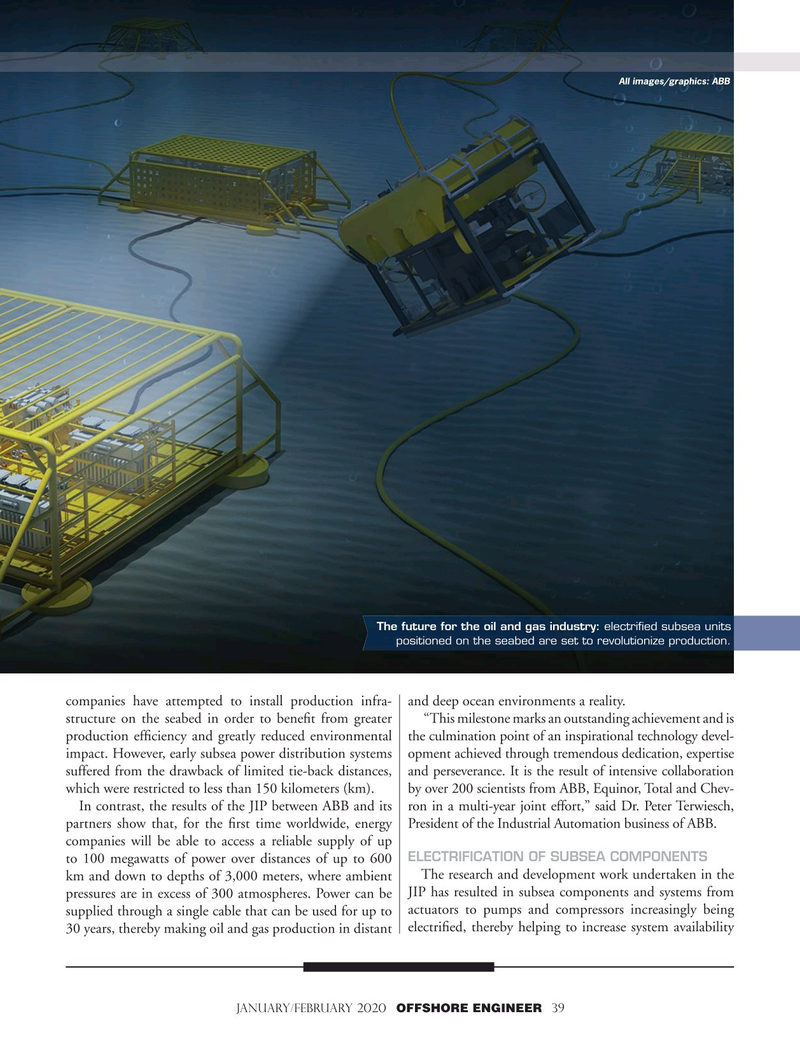
Page 39: of Offshore Engineer Magazine (Jan/Feb 2020)
Read this page in Pdf, Flash or Html5 edition of Jan/Feb 2020 Offshore Engineer Magazine
All images/graphics: ABB
The future for the oil and gas industry: electrified subsea units positioned on the seabed are set to revolutionize production. companies have attempted to install production infra- and deep ocean environments a reality.
structure on the seabed in order to bene? t from greater “This milestone marks an outstanding achievement and is production ef? ciency and greatly reduced environmental the culmination point of an inspirational technology devel- impact. However, early subsea power distribution systems opment achieved through tremendous dedication, expertise suffered from the drawback of limited tie-back distances, and perseverance. It is the result of intensive collaboration which were restricted to less than 150 kilometers (km). by over 200 scientists from ABB, Equinor, Total and Chev-
In contrast, the results of the JIP between ABB and its ron in a multi-year joint effort,” said Dr. Peter Terwiesch, partners show that, for the ? rst time worldwide, energy President of the Industrial Automation business of ABB.
companies will be able to access a reliable supply of up
ELECTRIFICATION OF SUBSEA COMPONENTS to 100 megawatts of power over distances of up to 600
The research and development work undertaken in the km and down to depths of 3,000 meters, where ambient pressures are in excess of 300 atmospheres. Power can be JIP has resulted in subsea components and systems from supplied through a single cable that can be used for up to actuators to pumps and compressors increasingly being 30 years, thereby making oil and gas production in distant electri? ed, thereby helping to increase system availability
JANUARY/FEBRUARY 2020 OFFSHORE ENGINEER 39

 38
38

 40
40